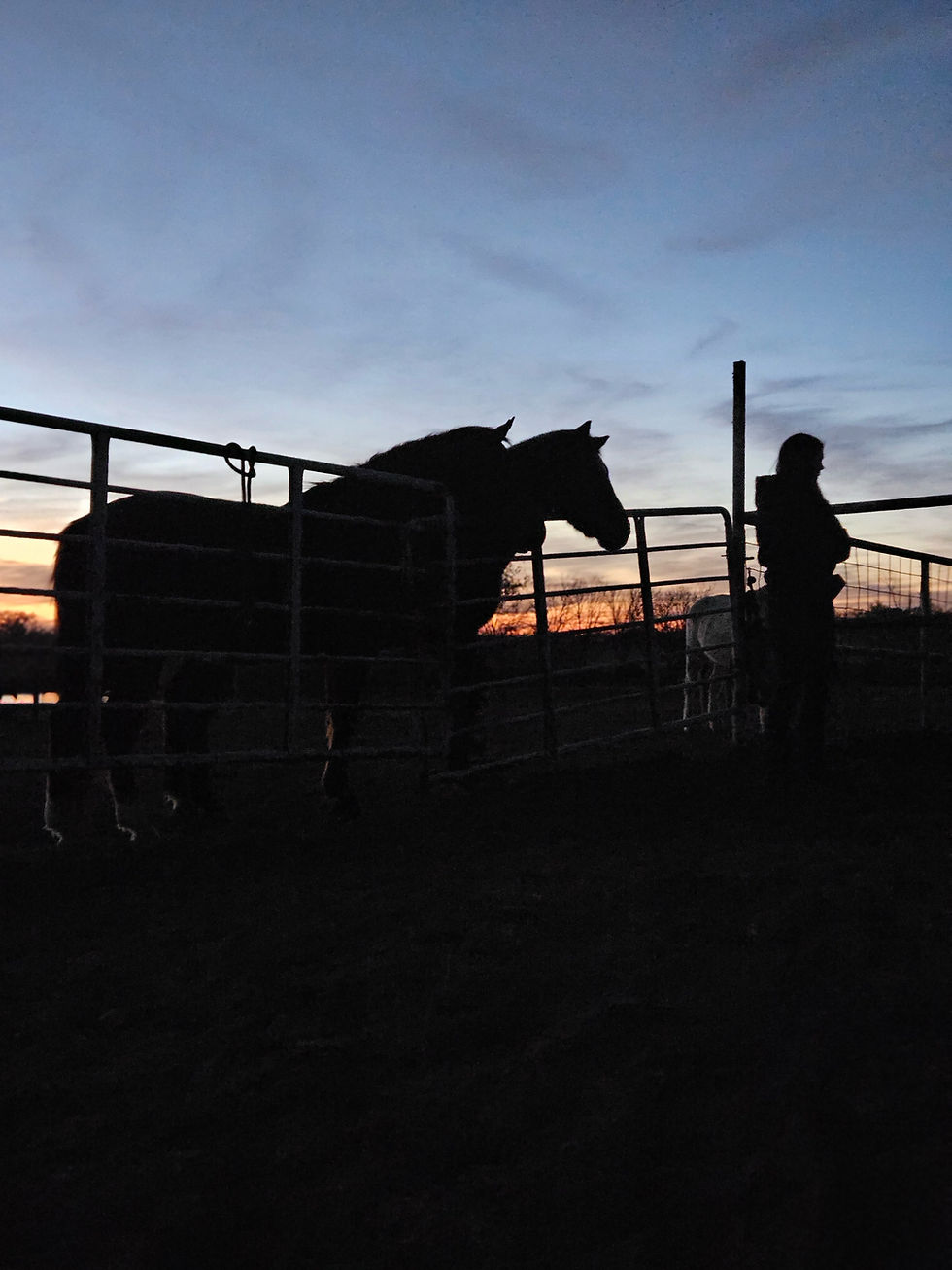Making Resolutions Stick: A Practical Guide for the New Year Using Positive Reinforcement Learning Principles For You & Your Animals
- Positive Roots Equine

- Jan 4, 2024
- 4 min read
We ve Got Time by LiQWYD | https://soundcloud.com/liqwyd/ Music promoted by https://www.chosic.com/free-music/all/ Creative Commons CC BY 3.0 https://creativecommons.org/licenses/by/3.0/
New Year’s resolutions have a notorious reputation for being abandoned, and I'm no exception. I tend to dive headfirst into change, whether it's exploring a new subject or revamping my diet. However, this all-or-nothing approach often leaves me feeling overwhelmed and frustrated. The laws of learning and behavior change have proven invaluable in my personal life, offering practical strategies for creating sustainable and achievable change.
Defining the Goal Behavior
Rather than making sweeping resolutions like swearing off a particular behavior, it’s crucial to define specific behavior goals. This principle applies to personal aspirations and even changes in my horse's life. The dead man’s test states that anything a dead man can do is not a behavior. For instance, let’s consider my personal goal of not eating junk food. A dead man can absolutely do that, and “not” doing something is not a behavior. However, eating a serving of vegetables at every meal is a specific and defined behavior. This principle holds equally true in animal training – it’s not about stopping a behavior (like my horse pulling on the lead rope) but rather defining a positive one, such as walking at the same pace as me next to my shoulder.
Small Approximations: Navigating Achievable Progress
Acknowledging that significant changes can be overwhelming, small approximations, or steps, are key. Whether adjusting a personal habit or transforming my horse's lifestyle, breaking down goals into small, manageable steps ensures steady progress. This approach helps me avoid feeling defeated when I can't achieve my goal immediately. For example, if transitioning my horse to barefoot seems like a colossal leap, my initial goal might be as simple as reading a book about barefoot practices or seeking professional advice (yes, I offer services in that area). Similarly, for personal goals like eating healthier, I might start by ensuring I have a serving of vegetables with at least one meal a day or, on weekends, with all my meals – whatever is small enough to be accomplishable.
Identifying Reinforcers: Understanding the Whys Behind Behaviors
Understanding the antecedent (cue, environment, or trigger), behavior, and consequence is extremely valuable. Whether it's a personal resolution or an equine goal, pinpointing the reinforcers behind a behavior sheds light on the path to change. Manipulating these three parts of the equation allows us to change behavior. For instance, if I find myself reaching for fast food every time I skip lunch and get hungry (antecedent), I could substitute it with a healthy snack in my car (alternative behavior with the same consequence). Similarly, for my horse, recognizing the antecedent to undesirable behavior and modifying it helps in shaping positive alternatives. If, for instance, my horse pulls on the lead rope on the way to the barn to be fed (antecedent), we could feed the horse in a pen at pasture – a different antecedent resulting in a different behavior, but the horse would receive the same consequence of getting fed.
Troubleshoot: Adjusting Criteria for Success & Re-evaluating Functions
If a particular step feels like a stretch, it's a signal to reassess and adjust the criteria. Breaking down criteria into smaller steps and adjusting when needed is a rule of thumb in animal training – and it works for personal goals too. If my initial goal of having vegetables with every meal feels too ambitious, I might start with one meal a week. It might seem small, but it builds confidence, setting the stage for future success. Sometimes, it's essential to re-evaluate the function of a behavior, understanding the deeper need it fulfills before making a change. For instance, if we thought the function of fast food was to feel full sooner but realize it's functioning to help cope with stress, we won't be able to change the behavior without ensuring that need is still being fulfilled. Similarly, if a horse is pulling on its lead because it lacks enough exercise, we need to meet this need in a different way.

As we embark on this journey of crafting change, I invite you to join me in applying these learning principles to your New Year's resolutions. Whether it's a personal goal or a desire to enhance your horse's well-being, the power of small approximations and understanding reinforcers can shape a path of meaningful progress. Perhaps the first approximation for your goal is to learn about a species-appropriate diet for your equine or to reach out to a professional for help with a challenging behavior. If this is you, I would love to help you reach your goals this year ❤️ I offer consulting on science-based horse care for new & experienced horse owners, positive reinforcement horse training lessons both online and in the local Austin area, and "Trim & Train" for horses that struggle with hoof care. Please reach out by emailing positiverootsequine@gmail.com or on Instagram or Facebook.
If you find yourself facing challenges, remember, every step forward, no matter how small, is a step toward lasting positive change. Here's to a year of growth, learning, and successful transformations!









Comments